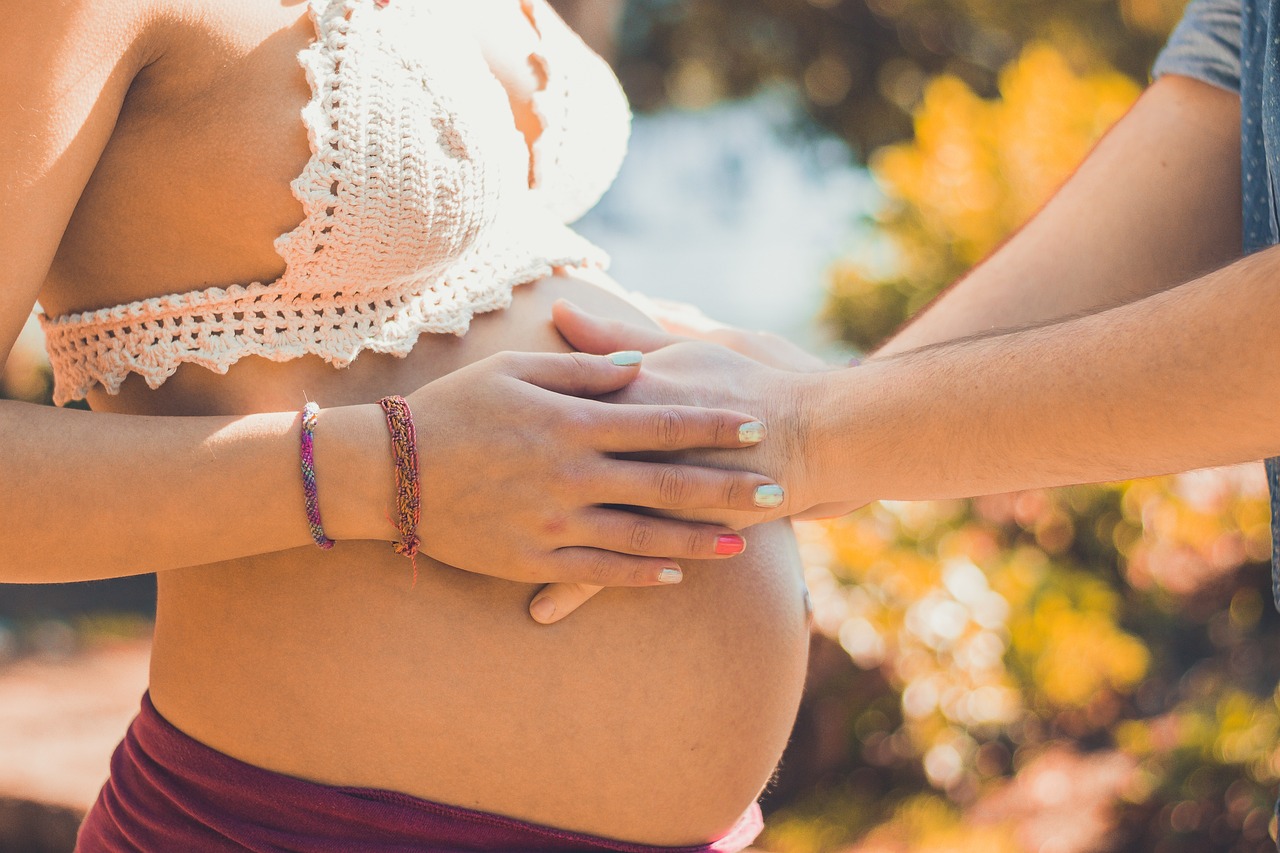Pregnancy is a wonderful experience that fills women with great joy and anticipation. However, it also comes with its own set of challenges discomforts. One of these happens to be rather common and that is sciatic nerve pain. At a time when expectant mothers require strength and stability, sciatica adds unanticipated stress and limits mobility. And
I’m going to walk you through the answers to what postpartum sciatic pain is. How to identify it and perhaps even more importantly how to alleviate your discomfort. You may not know what to expect with sciatica when you are pregnant, whether your first pregnancy or 10th. It can be overwhelming but I will help ease this process for you.
| Understanding Sciatic Nerve Pain |
What is the Sciatic Nerve?
The sciatic nerve is the body’s longest and widest nerve, originating in the lower back and traveling down to the toes. It links the spinal cord with leg and foot muscles, allowing for crucial functions sensory and motor functions. The sciatic nerve can cause shooting or throbbing pain that travels from the lower back to the buttocks and legs. This discomfort — referred to as sciatica — can render even the simplest things such as sitting, standing or walking a challenge.
Sciatic Nerve Pain During Pregnancy
Women’s bodies change by an astonishing amount through those 40 weeks but much of it is done without us noticing and sciatica is just one such result. This increased pressure on the sciatic nerve can cause pain or discomfort that may worsen as pregnancy continues because of how much space this growing uterus takes up. But sciatica can be different for each one of us, some may have severe pain while others might feel only a small amount of pain. If you do experience it, however, knowing the cause and symptoms is a useful first step for finding effective relief.
| Causes of Sciatic Nerve Pain in Pregnancy |
Hormonal Changes and Sciatica
Relaxin and other pregnancy hormones are important for preparing your body for giving birth. It helps to loosen ligaments and muscles in the pelvis so that, during delivery, the baby can pass more easily. Although this loosening also causes the pelvic joints to be unstable, which may exert increased pressure on the sciatic nerve. Although important, this change can lead to sciatica and other forms of lower back pain.
Gaining Weight and the Body Fitting Its Seat
Pregnancy weight gain is expected but may put more stress on the lower back, hips, and legs, potentially irritating the sciatic nerve. Your center of gravity moves forward as the baby gets bigger, and your lower back has to take on extra weight. This change in posture puts more pressure on the spine, pelvis and sciatic nerve; causing pain and discomforts particularly during the third trimester.
Baby Position Causing Sciatic Pain
Sometimes the baby is positioned in a way that exerts extra pressure on the sciatic nerve. As the baby develops and shifts, particularly in the third trimester, their weight might press against or create pressure on the sciatic nerve — due to positioning within a low-lying uterus. This can result in very acute, painful twinges or discomfort that lingers, depending on the positions of the baby.
| Symptoms of Sciatic Nerve Pain in Pregnancy |
Recognizing Common Symptoms
But in case you have sciatica, the pain may be sharp and shooting, starting within the low back or buttocks and radiating down one leg. Or it may be an uncomfortable or painful burning, tingling sensation that occurs when performing simple activities. It can sometimes lead to numbness in or muscle weakness in the affected leg, preventing women from completing everyday tasks or painlessly walking. Even though sciatic pain is most often unilateral, it can also be bilateral.
When to Seek Medical Help
Although sciatic discomfort can typically be alleviated with self-treatment and lifestyle adjustments, there are times whereby you require to seek medical help. Seek immediate care if you have pain that is not relieved with rest, trouble walking, weakness in your legs or loss of bowel or bladder control. These symptoms could imply a more serious underlying condition that needs to be evaluated by an expert.
| Helpful Tips on How to Alleviate Sciatic Pain during Pregnancy |
Light exercise & stretches
Regular gentle exercise can ease pressure on the sciatic nerve, strengthen the pelvis and lower back muscles, and help alleviate sciatic pain. Low-impact Activities: Walking, swimming and light stretching puts minimal pressure on the sciatic nerve. Swimming, in particular — the water does an excellent job of taking pressure off the lower back and allows one to be active without experiencing much sciatic pain.
Recommended Pregnancy Stretches
Specific stretches can work wonders for sciatic pain relief. Here are a few that are safe and effective during pregnancy:
- Cat-Cow Stretch: Get on all fours and alternate between arching your back upwards and lowering it downwards. This movement relieves lower back pressure and promotes flexibility.
- Seated Piriformis Stretch: Sit on a chair and place one ankle over the opposite knee. Gently lean forward, feeling the stretch in your hip. This stretch targets the piriformis muscle, which can irritate the sciatic nerve when tight.
- Child’s Pose: Kneel on the floor, sit back on your heels, and extend your arms forward on the ground. This pose stretches the lower back and is very soothing.
Massage Therapy Benefits
Another option to alleviate sciatic pain is prenatal massages that can reduce muscle tension while improving circulation. A skilled prenatal massage therapist will use gentle techniques that will relieve muscle tightness around the lower back and hips also reducing pressure on the sciatic nerve. Having regular massages when you are pregnant, can help to make yourself feel comfortable and relaxed.
Heat and Cold Therapy Options
Switching between hot and cold compresses helps provide instant relief from pain. Cold pack to the area for 15 minutes at a time for inflammation, then heat to relax associated musculature with moist heating pad. This combination can be used as necessary throughout the day. However, heat needs to be applied only briefly at a time because prolonged application can lead to increased inflammation.
Importance of Good Posture
Fixing posture is essential to relieve pain from sciatica. Refrain from slouching or staying the same way for too long. If you are at a desk, invest in an ergonomic chair, or place a pillow to support your back. While standing, maintain a good posture by standing up straight and shifting your weight from leg to leg to relieve pressure off of the sciatic nerve. Good posture will bring a lot of relieve to your lower back area.
Yoga for Sciatic Relief During Pregnancy
Prenatal yoga involves hip, back, and pelvic stretches that relieve pressure on the sciatic nerve. Stretches such as pigeon pose, downward dog and child’s pose indirectly stretch the muscles that wrap around the sciatic nerve itself, providing enormous pain relief. Along with relief from the pressure on your sciatic nerve, prenatthal yoga increases flexibility, decreases tension and stress, and encourages a sense of balance.
| Preventative Tips to Minimize Sciatic Pain |
Sleeping Positions to Relieve Pain
Sleeping on your side — particularly on the left side — helps blood circulation and also can reduce sciatica. A pillow between your knees keeps the spine aligned and pressure off the sciatic nerve. A full-body pregnancy pillow is a great option since it can support the belly, back, and hips so that you don’t strain as you attempt to get into comfortable position.
Supportive Footwear Choices
Footwear gets practically no attention in relation to sciatica, but it should get a lot more! Shoes that are flat, cushioned and offer arch support minimize the impact on your lower back and hips by providing stability. Although high heels are stylish, you should ditch this type of shoes and wear sneakers or other comfortable. They can exacerbate the symptoms of Sciatica during pregnancy due to negative effects on your natural posture and increased pressure on the lower back area.
Using Pregnancy Pillows as Extra Support
Pregnancy pillows are specifically designed for supporting the body needs of a newly pregnant person. And a C- or U-shaped pregnancy pillow can help eliminate pressure points, keep the spine aligned and offer more support to the belly and legs—both which may truly minimize (or even avoid) sciatic discomfort flares.
Regular Chiropractic Care
Another natural, non-drug approach to try is chiropractic care for relief of sciatic pain. Prenatal chiropractors are trained to adjust subluxations in the spine that can help alleviate some of the missing pressure from the sciatic nerve. Pregnancy is a special case: always ask your doctor before looking for a chiropractor.
Avoid Lifting Heavy Objects
If it is unavoidable, then don’t lift heavy things when pregnant, as it increases pressure on the lower back. When lifting something, bend at the knees (not the waist), keep the item close to your body as you raise it slowly with both arms so that no stress is placed on back muscles.
| Conclusion |
Pregnancy is a beautiful and transformational time, but for women with sciatica pain it may also be felt as an incredibly difficult period in their lives. The good news is that there are many great ways to cope with and alleviate sciatic pain. From light movement and stretching, to sleeping postures and proper posture. You can also invest yourself with a few minor lifestyle changes that range from using pregnancy pillow to select proper shoes. These will offer you absolute comfort and keep your body moving.
Keep in mind. Every pregnancy is different so you should to really listen to your body and check with your physician or midwife. Find out what sorts of treatments work for you then find the combination of treatments that’s best for standpoint. Your body is hard at work and that should be taken care of the most right now. Pampering yourself during this time is the best present you can give to yourself as well as your baby.
| Frequently Asked Questions (FAQs) |
Can Sciatica Affect My Baby During Pregnancy?
No, sciatica doesn’t directly affect the baby. While it can cause discomfort for the mother, it has no impact on the baby’s health or development.
Is Sciatica More Common in Certain Trimesters?
Yes, sciatica is more likely to occur in the later trimesters, particularly as the baby’s weight increases, placing added pressure on the lower back and sciatic nerve.
Can Sciatica Go Away After Pregnancy?
In many cases, sciatic pain decreases after childbirth as the body gradually returns to its pre-pregnancy state. With time and self-care, sciatic pain typically improves.
Are Medications Safe for Sciatic Pain Relief?
Always consult a healthcare provider before taking any medications during pregnancy. Some over-the-counter pain relievers are safe in moderation, but professional guidance is essential.
Does Prenatal Yoga Really Help with Sciatic Pain?
Yes, prenatal yoga is effective for sciatica. The gentle stretching and strengthening it provides can relieve pressure on the sciatic nerve, making








